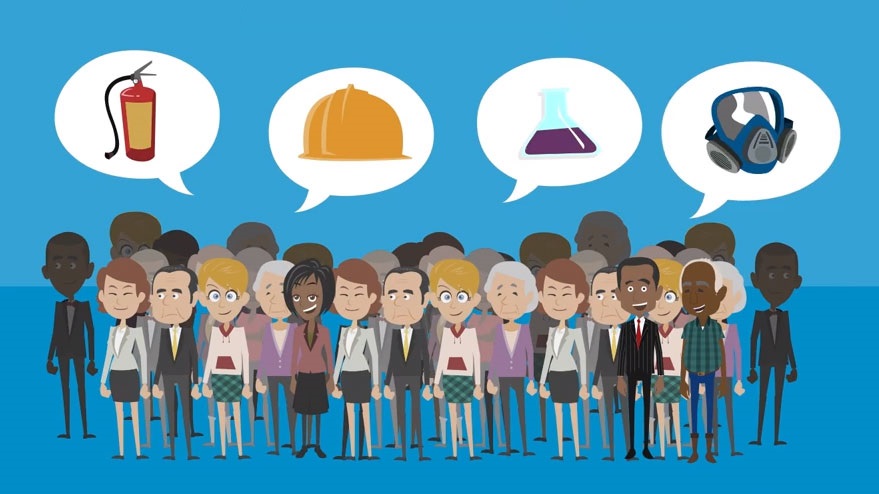
L’ECHA insieme a Cefic, Concawe, DUCC, Eurométaux, Fecc e gli Stati membri ha organizzato a Bruxelles lo scorso 21 novembre 2019 la dodicesima riunione dell’ENES (Exchange Network on Exposure Scenarios).
ENES è una piattaforma collaborativa che coinvolge l’industria e le autorità, che mira a identificare e promuovere le buone pratiche nella comunicazione di informazioni sull’uso sicuro di sostanze chimiche pericolose all’interno della catena di approvvigionamento.
Scopo dell’evento
In questi anni ENES ha sviluppato una serie di approcci e strumenti per migliorare lo scambio di informazioni tra i produttori/importatori di sostanze pericolose e coloro che le utilizzano a valle nella catena di approvvigionamento.
Gli obiettivi del dodicesimo incontro di ENES erano:
- informare le aziende che producono, formulano e utilizzano sostanze chimiche su approcci e strumenti che possono rendere la comunicazione lungo la catena di approvvigionamento più strutturata ed efficiente;
- dimostrare come funzionano gli strumenti disponibili e i vantaggi derivanti del loro utilizzo; e
- aumentare la comprensione del valore pratico delle informazioni incluse nella scheda di dati di sicurezza estesa per garantire luoghi di lavoro sicuri e prodotti sicuri.
ECHA ha reso disponibile tutto il materiale presentato durante l’evento.
Handout
- Blueprint for generating, communicating and receiving safe use advice for hazardous chemicals [PDF][EN]
Session 1 – Setting the scene
- Relevance of ENES for REACH and for REACH Review Action 3 – V. Jezso, DG GROW [PDF][EN]
- Communication on safe use of chemicals in the supply chain – the basic principles and obligations – K. Pollard, ECHA [PDF][EN]
- What is to be improved – Observations from the enforcement perspective – E. Anwander, Forum [PDF][EN]
- Relevance of ENES for industry – S. Van De Broeck, Cefic & J. Robinson, DUCC [PDF][EN]
Session 2 – Five steps to make REACH exposure scenarios work
- Formulator sector: Sector use maps – L. Portugal, DUCC [PDF][EN]
- Registrant: Carry out CSA / Generate ES for communication – G. Bachler, Cefic [PDF][EN]
- Registrant: eSDS authoring – D. Marsh, Exxon Mobil [PDF][EN]
- Formulator: Use-conformity and mixture SDS generation with the SUMI selection for mixture SDS – J. Robinson, CEPE [PDF][EN]
- Formulator: Use-conformity and mixture SDS generation with the LCID-based inclusion method – C. Bögi, BASF [PDF][EN]
- End-user: Use-conformity and workplace safety assessment by industrial end user – E. Tjoe Nij, Dow/Cefic [PDF][EN]
- End-user: Use-conformity and workplace safety assessment by professional user/SUMI – G. Sebastio, A.I.S.E. [PDF][EN]
Market place posters
- Sector use maps [PDF][EN]
- Carrying out CSA using the ENES tool set [PDF][EN]
- Registrant: Input into eSDS authoring [PDF][EN]
- SUMI selection methods [PDF][EN]
- Mixture SDS Generation with the LCID method [PDF][EN]
- Industrial end user of chemicals: risk assessment & exposure scenarios [PDF][EN]
- Professional user and SUMIs [PDF][EN]
- Making Chesar 3.6 better support workers’ exposure assessment [PDF][EN]
Session 3 – Looking ahead to risk management
- Flow analysis for understanding the use pattern of a substance: A tool to get prepared for regulatory risk management – V. Verougstraete, Eurometaux [PDF][EN]
- How does communication in the supply chain change when regulatory risk management emerges – L. Allen, Lead Consortium [PDF][EN]
Session 4 – Conclusion
Fonte: ECHA.
Pavia, 6 dicembre 2019.

